Hi-Fi Hall of Fame
People Inductee
Saul Marantz
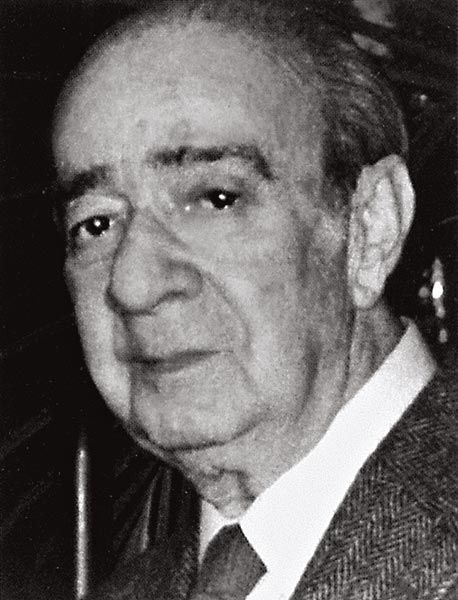
Introduction
Saul Bernard Marantz (1911-1987) was an American audio engineer and entrepreneur who played a significant role in the early development of high fidelity audio systems. Marantz’s life and work exemplify the American dream, as he went from humble beginnings as a son of Jewish immigrants to becoming a pioneer in the audio industry and founding one of the most respected brands in home audio.
The Marantz family emigrated to the United States in 1914, settling in New York city. From a young age, Marantz displayed an interest in electronics and a keen ear for music. He later credited his mother, who was an amateur singer, with instilling in him a love of music and a desire for fidelity in its reproduction.
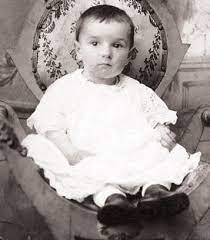
In 1948, Marantz founded his own company, Saul Marantz, Inc., with the goal of producing high quality audio components that would be accessible to music lovers. Those first products were very successful, and Marantz went on to become one of the most iconic brands in Hi-Fi.
Saul Marantz’s life was a testament to the power of innovation, hard work, and passion. Let’s take a look at the life and accomplishments of this great man.

Key Facts
| Name | Saul Bernard Marantz |
| Born | July 7, 1911 |
| Died | January 17, 1997 (age 85 years) |
| Key Accomplishments | Founded Marantz Founded Dahlquist |
| Company website | www.Marantz.com |
Founding of Marantz
After serving in the Pacific Theater during World War II, Saul Marantz and his wife Jean returned to the United States and made their home in Queens, New York. Despite lacking formal education in electronics, Marantz possessed an innate talent for tinkering and a natural aptitude for the field. As a devoted music enthusiast, amateur classical guitarist, and later, a close associate of Andrés Segovia, Marantz’s passion for music and technology converged.


Encouraged by his wife, Marantz embarked on an ambitious project in the family home. In 1951, he decided to design and manufacture a 100 unit production run of a preamplifier named the “Audio Consolette”. The Consolette had a total of seven inputs, including phono, tuner, and TV. It supported multiple equalization curves for the phono inputs, because there was no industry standard for record equalization at that time.

The Consolette sold well, and evolved into the Marantz Model 1 preamplifier, which was introduced in 1953. The Model 1 was one of the first preamplifiers to offer the newly standardized RIAA phono equalization.
In a fortuitous turn of events, an unemployed electronics designer named Sidney Smith stumbled upon an advertisement for the Model 1 and arrived unannounced at the Marantz residence seeking employment. Smith’s engineering skills perfectly complemented the needs of the nascent company. The ensuing 14-year collaboration between Marantz and Smith gave rise to some of the most iconic audio products in history, profoundly influencing the future of high-end audio.
Marantz experienced immediate success, receiving orders for 600 Model 1s before completing the initial batch of 100. Relocating the company to an industrial factory, and with Smith serving as the chief engineer, they embarked on creating a series of exceptional components that garnered widespread acclaim and commercial success.
Marantz Iconic Products
Together, Saul Marantz and Sid Smith designed and produced a number of iconic products in the early days of the company. Here are a few of the most notable:
Model 1 Preamplifier
The Model 1, the successor to the “Audio Consolette,” appeared in 1954. Although it greatly resembled the “Audio Consolette,” it was the first preamplifier to include the new RIAA (Recording Industry Association of America) standard equalization curve in addition to a large number of older and non-standard curves. The Model 1 also had a tape monitor switch and a “TV” input to allow the user to connect the system to a tape recorder or television set.

Model 2 Power Amplifier
The Model 2 power amplifier was released in 1956. Largely completed by Sidney Smith, it was a very successful tube design using EL34s in an “ultra-linear” (push-pull) configuration.
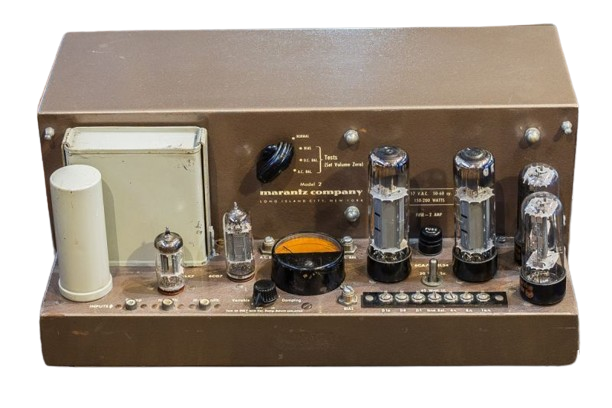
Model 5 Power Amplifier
In 1958, Marantz released the Model 5 power amplifier, similar to the Model 2 but in a smaller chassis and with a lower power output. It was priced at USD$147 without the metal cage, or USD$154.50 with the cage.
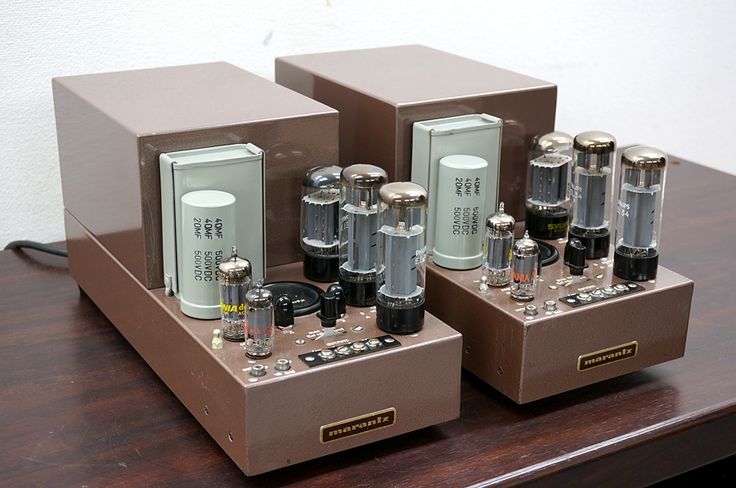

Model 6 Stereo Adaptor
With the arrival of stereo records in 1958, the Hi-Fi industry began producing equipment that was optimized for two channel sound. Marantz and Smith developed the Model 6 stereo adaptor, which was used to unite two Model 1 preamplifiers for stereo use.
Model 7 Stereo Preamplifier
In 1958, Marantz introduced the Model 7, a genuine stereo preamplifier that marked a departure from the norm. Its circuitry differed significantly from most preamplifiers of its era, incorporating a distinctive three-stage phono preamp and equalizer, later renowned as the “Marantz circuit.” The Model 7 revolutionized the high-fidelity industry, setting itself apart from other products. With over 130,000 units sold during its lifespan, it earned acclaim as the quintessential preamplifier design for many years. The front panel, characterized by a sophisticated asymmetrical arrangement of knobs and switches, reflected Saul Marantz’s profound understanding of industrial design and became a hallmark of the Marantz brand.


Model 8B Stereo Power Amplifier
In 1959, Marantz introduced the Model 8 stereo power amplifier, soon followed by the release of the Model 8B. This represented the company’s only foray into tube stereo amplifiers. Although the Model 8B, launched in 1962, is often perceived as a modified iteration of the Model 8, it features significant differences. Notably, the 8B incorporated a transformer designed by Sidney Smith, resulting in improved stability and phase accuracy. Both the Model 8 and the 8B delivered a robust power output of 30 watts per channel.

Model 9 “Monobloc” Power Amplifier
Appearing in 1960, the Model 9 monaural power amplifier transformed the audio landscape. Employing EL34 tubes and an ultra-linear parallel push-pull design, this amplifier achieved an impressive 70 watts of power, establishing a noteworthy milestone for its time. The increased power output was a strategic response to intense competition, particularly from McIntosh, renowned for crafting power amplifiers with superior power compared to comparable Marantz designs.
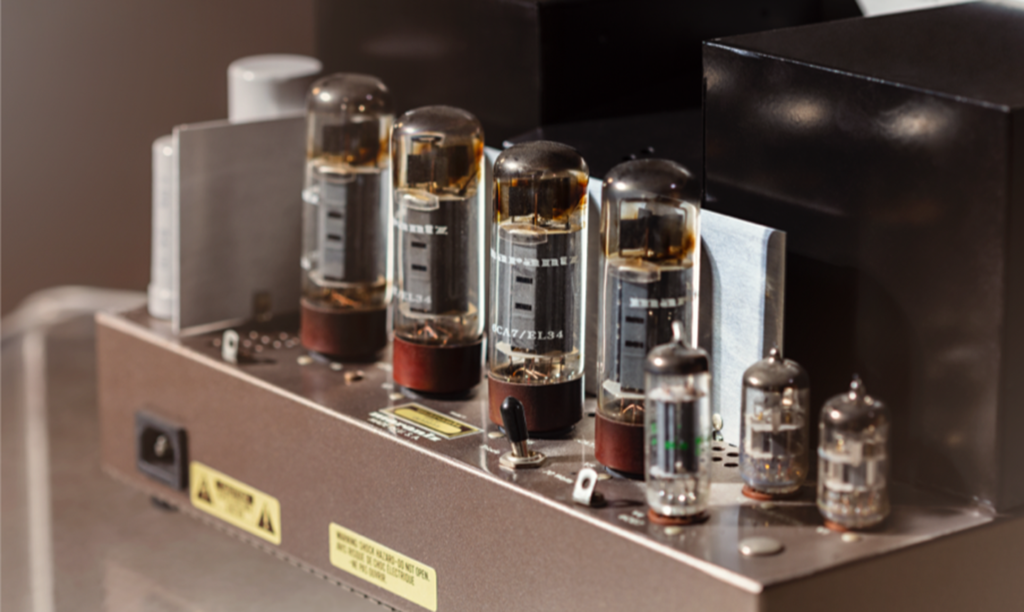
Beyond its robust power capabilities, the Model 9 featured innovative aesthetics. A bias meter, centrally positioned on the front panel, and a clever drop-down door discreetly concealed adjustments and connections. This meter not only facilitated easy compensation for varying tube characteristics but also perpetuated Marantz’s tradition of seamlessly integrating functionality with refined design—a design philosophy still upheld by Marantz to this day.

Model 10B Tuner
In the 1960s, Stereo Frequency Modulation (FM) radio broadcasts emerged, capturing the interest of Hi-Fi enthusiasts eager to integrate these broadcasts into their home audio systems. Recognizing the need for a superior tuner, Saul Marantz enlisted the expertise of skilled radio engineer Richard Sequerra to join the Marantz team. Together, they introduced the Model 10 in 1964, setting a new standard for FM radio performance. However, due to manufacturing challenges, Marantz swiftly developed a replacement, resulting in the renowned Model 10B. Celebrated for its outstanding performance and design, the Model 10B has since become a classic in the realm of audio equipment.


Model 18 Solid State Receiver
Another technological revolution from the 1960s was the advent of “solid state” components called transistors. These were superior to the older vacuum tube technology in many respects, and the Hi-Fi industry began to transition to the new technology. For Marantz, the Model 18 receiver was the first product to use solid state technology. The Model 18 was a collaborative effort featuring Saul Marantz’s cosmetic design, Sid Smith’s audio circuitry, and Dick Sequerra’s tuner expertise. The Model 18 was the first Marantz product to incorporate their “Gyro-Touch” tuning wheel, and it also featured an oscilloscope to aid in tuning accuracy and signal analysis.


Marantz Design Aesthetic
Saul Marantz was first and foremost a graphic designer, and so all of those early Marantz products were built with a unique and beautiful aesthetic. The designs were classic, symmetrical, and timeless. They used pleasing dimensions and ratios, sophisticated and elegant fonts for the controls, along with pleasing colours and materials.
For those of you who enjoy reading about fonts (you know who you are!), here’s a website for graphic designers, explaining Marantz’s design aesthetic and use of classic fonts such as Metropolis and Davison Spencerian:
Sale of Marantz to Superscope
Unfortunately, by the mid 1960s the Marantz company began to experience financial problems. Saul Marantz decided to sell the company to a new owner that could scale up the company and increase sales. Saul Marantz sold the company to a company called Superscope. Superscope was founded by Japanese entrepreneur Akio Morita in the 1960s; Morita is perhaps best known as the co-founder of Sony Corporation. Superscope initially began as a manufacturer of tape recorders and other audio equipment.
The acquisition by Superscope occurred during a period of expansion and international interest in audio equipment markets. Superscope’s acquisition of Marantz was driven by the desire to enter the high end audio market and leverage Marantz’s established brand and expertise in audio engineering. Marantz continued to operate relatively independently under Superscope’s ownership.
The Marantz Model 18 marked the final product to benefit directly from Saul Marantz’s input. As the transition from Saul Marantz’s ownership to Superscope unfolded, the company experienced heightened internal tension. The new management’s goal to expand the brand’s appeal intensified the existing conflicts within the organization. Inevitably, the disparities between the visionary and entrepreneurial spirit that birthed the Marantz Company and the pragmatic approach and emphasis on more affordable products by the new owners led to this friction.
After the sale of the company to Superscope, in the autumn of 1967, Saul Marantz was offered the largely symbolic role of “President Emeritus.” However, recognizing the significant differences in vision, he resigned in December of that year, severing his direct ties with the organization he had founded. His final endeavor involved securing a new engineering team to carry forward the development of new Marantz-branded components. With the departure of Sidney Smith, Dick Sequerra, and the rest of the “old guard,” this marked the conclusion of Saul Marantz’s direct involvement with the company.
Founding of Dahlquist
About 3 years after Saul Marantz sold his company to Superscope, he discovered another great talent: a man obsessed with designing the perfect speaker. That man, Jon Dahlquist, was an engineer in the aerospace industry and had played a key role in the development of the lunar landing module.
Dahlquist had already developed a prototype of his signature “DQ-10” speaker. Marantz sensed that Dahlquist could become a great company and in 1972 he cofounded the Dahlquist Company. By 1973 the DQ-10 was in production and the company enjoyed a long run producing high quality speakers and related components. Saul Marantz would serve as president of Dahlquist until 1978 when he again retired from the Hi-Fi industry.

Founding of New Lineage and the passing of Saul Marantz
In 1996, Mr. Marantz, at the ripe old age of 84, decided to re-enter the audio business. This time he teamed up with legendary audio designer John Curl to form the New Lineage Corporation. Sadly, Saul Marantz passed away a year later, in January of 1997. His passing was also the end of the New Lineage Corporation.
Impact on Hi-Fi
Reflecting on his career, it is evident that Saul Marantz had a profound influence on the Hi-Fi industry. He stands not only as a key figure in the establishment of the renowned Marantz brand but also as a pioneer in shaping the concept of high end audio equipment.
Throughout his tenure with the company, Marantz introduced a plethora of top tier products meticulously crafted to excel in measurement, auditory appeal, and longevity. The subsequent custodians of the Marantz brand, including Superscope and others, demonstrated a considerable reverence for the Marantz name, consistently producing high-quality equipment that remains highly coveted among audiophiles. Even today, more than 70 years since its inception, Marantz stands as a flagship brand (part of the “Sound United” family of brands) in the realm of Hi-Fi manufacturing. Much like the vintage Marantz equipment, the latest amplifiers, receivers, turntables, and other components continue to be in high demand among audiophiles seeking both high performance and timeless design. Saul Marantz’s enduring legacy continues to cast a significant impact on the Hi-Fi industry, resonating with enthusiasts and professionals alike in the pursuit of audio excellence.
Here’s a link to the Marantz website:
Induction to the Hi-Fi Hall of Fame
Saul Marantz was a pioneer in the Hi-Fi pantheon. He saw an opportunity in 1951 that few others saw, and he was bold enough to build his first preamplifiers on his kitchen table! For the next seventeen years, his company produced a series of iconic Hi-Fi masterpieces, many of which are still in service today. In addition, he created a design aesthetic that has stood the test of time: those old Marantz products still look good today!
For all of these reasons, Saul Marantz is inducted into the Hi-Fi Hall of Fame.
